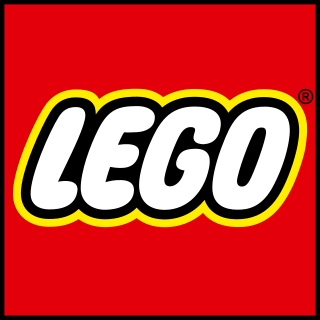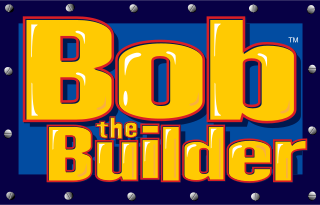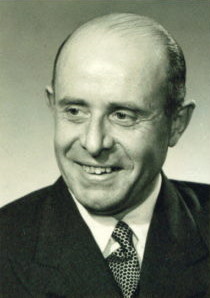
Lego is a line of plastic construction toys that are manufactured by The Lego Group, a privately held company based in Billund, Denmark. The company's flagship product, Lego, consists of variously colored interlocking plastic bricks made of acrylonitrile butadiene styrene that accompany an array of gears, figurines called minifigures, and various other parts. Lego pieces can be assembled and connected in many ways to construct objects, including vehicles, buildings, and working robots. Anything constructed can be taken apart again, and the pieces reused to make new things.

Trivial Pursuit is a board game in which winning is determined by a player's ability to answer trivia and popular culture questions. Players move their pieces around a board, the squares they land on determining the subject of a question they are asked from a card. Each correct answer allows the player's turn to continue; a correct answer on one of the six "category headquarters" spaces earns a plastic wedge which is slotted into the answerer's playing piece. The object of the game is to collect all six wedges from each "category headquarters" space, and then return to the center "hub" space to answer a question in a category selected by the other players.

An action figure is a poseable character model figure made most commonly of plastic, and often based upon characters from a film, comic book, military, video game or television program; fictional or historical. These figures are usually marketed toward boys and adult collectors. The term was coined by Hasbro in 1964 to market G.I. Joe to boys.

Jenga is a game of physical skill created by British board game designer and author Leslie Scott and marketed by Hasbro. Players take turns removing one block at a time from a tower constructed of 54 blocks. Each block removed is then placed on top of the tower, creating a progressively more unstable structure.

Mr. Potato Head is an American toy brand consisting of a plastic model of a potato "head" to which a variety of plastic parts can attach — typically ears, eyes, shoes, hat, nose, pants and mouth.

Bob the Builder is a British animated children's television series created by Keith Chapman for HIT Entertainment and Hot Animation. The series follows the adventures of Bob, a building contractor, specialising in masonry, along with his colleague Wendy, various neighbours, and friends, and equipment, and their gang of anthropomorphised work-vehicles, Scoop, Muck, Dizzy, Roley, Lofty and many others. The series ran from 12 April 1999 to 31 December 2011 in the United Kingdom through the CBBC strand and later CBeebies. The series originally used stop-motion from 1999 to 2009, but later used CGI animation starting with the spin-off series Ready, Steady, Build!. British proprietors of Bob the Builder and Thomas & Friends sold the enterprise in 2011 to US toy-maker Mattel for $680 million.

Operation is a battery-operated game of physical skill that tests players' hand-eye coordination and fine motor skills. The game's prototype was invented in 1964 by University of Illinois industrial-design student John Spinello, who sold his rights to renowned toy designer Marvin Glass for $500 and the promise of a job upon graduation, which was not fulfilled. Initially produced by Milton Bradley in 1965, Operation is currently produced by Hasbro, with an estimated franchise worth $40 million.
George Lerner (1922–1995) was an American inventor known for inventing Mr. Potato Head.

Stretch Armstrong is a large, gel-filled action figure that was first introduced in 1976 by Kenner. In 2016, at the New York Toy Fair, Hasbro announced the return of the Stretch Armstrong toy in its original 1976 design.

Playskool is an American company that produces educational toys and games for children. It is a subsidiary of Hasbro, Inc., and is headquartered in Pawtucket, Rhode Island.
The history of Lego began in 1932, when Ole Kirk Christiansen founded the company in a Danish carpentry workshop, and continues into the 21st century as a popular and very profitable line of construction toys and related products and services, with a significant impact on various areas of popular culture. Despite its expansion, the company remains privately held.

Lite-Brite is a toy that was originally marketed in 1967. It consists of a light box with small colored plastic pegs that fit into a panel and illuminate to create a lit picture, by either using one of the included templates or creating a "freeform" image on a blank sheet of black paper.

A construction set is a set of standardized pieces that allow for the construction of a variety of different models. Construction sets are generally marketed as toys. One very popular brand of construction set toys is Lego.

Toy blocks are wooden, plastic, or foam pieces of various shapes and colors that are used as construction toys. Sometimes, toy blocks depict letters of the alphabet.

Beyblade is a line of spinning-top toys originally developed by Takara, first released in Japan in July 1999, along with its debut series. Following Takara's merger with Tomy in 2006, Beyblades are now developed by Takara Tomy. Various toy companies around the world have licensed Beyblade toys for their own regions, including Hasbro in Western countries, Sonokong in Korea, and Takara Tomy for Eastern countries.

Mega Brands Inc. is a Canadian children's toy company that is currently a wholly owned subsidiary of Mattel. Mega Bloks, a line of construction set toys, is its most popular product. Its other brands include Mega Construx, Mega Puzzles, Board Dudes and Rose Art. The company distributes a wide range of construction toys, puzzles, and craft-based products.

Fisher-Price is an American company that produces educational toys for infants, toddlers and preschoolers, headquartered in East Aurora, New York. The company was founded in 1930 during the Great Depression by Herman Fisher, Irving Price, Helen Schelle, and Margaret Evans-Price.
Denys Fisher was an English engineer who invented the spirograph toy and created the company Denys Fisher Toys.

Best-Lock Construction Toys is a brand of plastic building bricks that are compatible with Lego. Best-Lock Group Limited, which manufacture the bricks, is based in Colne, Lancashire, England.

Hilary "Harry" Fisher Page was an English toy maker and inventor of Self-Locking Building Bricks, the predecessor of Lego bricks. He founded the Kiddicraft toy company.

















